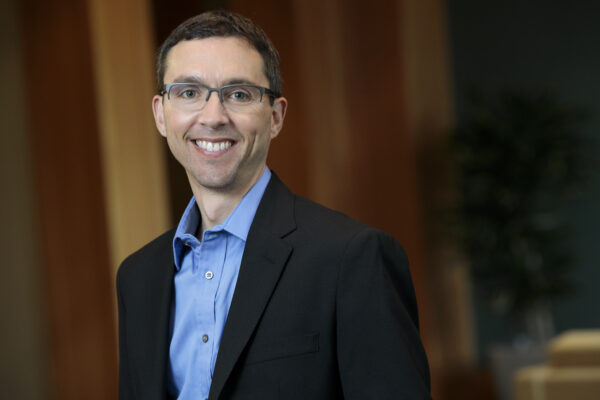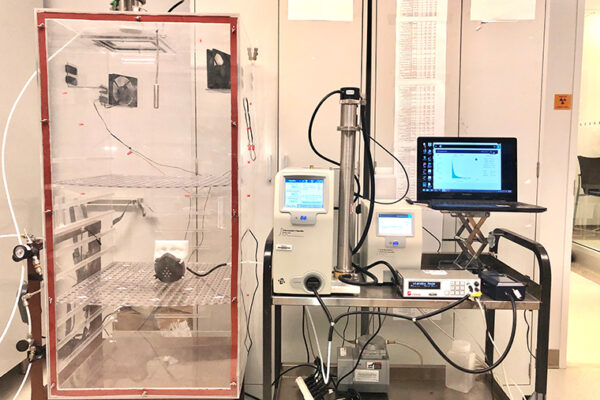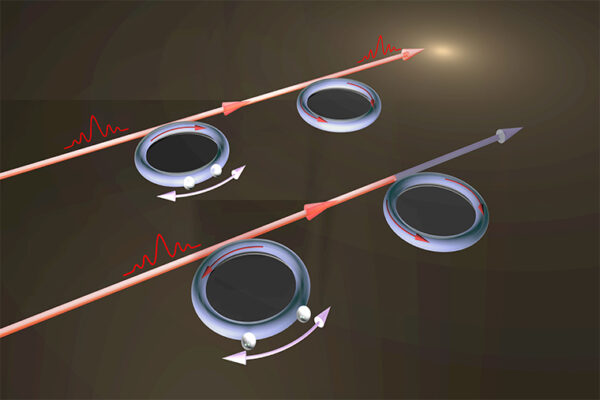New results from an atmospheric study over the eastern North Atlantic reveal that tiny aerosol particles that seed clouds can form out of next-to-nothingness over the open ocean.
This “new particle formation” occurs when sunlight reacts with molecules of trace gases in the marine boundary layer, the atmosphere within about the first mile above Earth’s surface. The findings will improve how aerosols and clouds are represented in models that describe Earth’s climate so scientists can understand how the particles — and the processes that control them — might have impacted the planet’s past and present and better predict the future.

The research, a collaboration led by principal investigator Jian Wang, professor of energy, environmental and chemical engineering and director of the Center for Aerosol Science and Engineering at the McKelvey School of Engineering at Washington University in St. Louis, was published Jan. 22 in the journal Nature Communications.
Wang, along with lead authors Guangjie Zheng and Yang Wang, initiated the project while working at the U.S. Department of Energy (DOE)’s Brookhaven National Laboratory. Wang has remained a close collaborator with the lab since moving to Washington University in 2018.
“For a long time, people thought this process was very rare,” Wang said. “We found from our study, however, that it happens quite frequently.
“When we say ‘new particle formation,’ we’re talking about individual gas molecules, sometimes just a few atoms in size, reacting with sunlight,” said study co-author Chongai Kuang, a member of the Environmental and Climate Sciences Department at Brookhaven. “It’s interesting to think about how something of that scale can have such an impact on our climate — on how much energy gets reflected or trapped in our atmosphere,” he said.
But modeling the details of how aerosol particles form and grow, and how water molecules condense on them to become cloud droplets and clouds, while taking into consideration how different aerosol properties (e.g., their size, number, and spatial distribution) affect those processes, is extremely complex — especially if you don’t know where all the aerosols are coming from. So Wang led a team of scientists from Brookhaven and collaborators in atmospheric research around the world to collect data in a relatively pristine ocean environment. In that setting, they expected the concentration of trace gases to be low and the formation of clouds to be particularly sensitive to aerosol properties — an ideal “laboratory” for disentangling the complex interactions.
“This was an experiment that really leveraged broad and collaborative expertise at Brookhaven in aerosol observations and cloud observations,” Kuang said.
Land and sea
The study made use of a long-term ground-based sampling station on Graciosa Island in the Azores — an archipelago 850 miles west of continental Portugal — and a Gulfstream G-1 aircraft outfitted with 55 atmospheric instrument systems to take measurements at different altitudes over the island and out at sea. Both the ground station and aircraft belong to the DOE Office of Science’s Atmospheric Radiation Measurement ARM user facility, operated by a consortium of nine DOE national laboratories.
The team flew the aircraft on “porpoise flights,” ascending and descending through the boundary layer to get vertical profiles of the particles and precursor gas molecules present at different altitudes. And they coordinated these flights with measurements taken from the ground station.
The scientists hadn’t expected new particle formation to be happening in the boundary layer in this environment because they expected the concentration of the critical precursor trace gases would be too low.
“But there were particles that we measured at the surface that were larger than newly formed particles, and we just didn’t know where they came from,” Kuang said.
The aircraft measurements gave them their answer.
“This aircraft had very specific flight patterns during the measurement campaign,” Kuang said. “They saw evidence that new particle formation was happening aloft — not at the surface but in the upper boundary layer.” The evidence included a combination of elevated concentrations of small particles, low concentrations of pre-existing aerosol surface area, and clear signs that reactive trace gases such as dimethyl sulfide were being transported vertically — along with atmospheric conditions favorable for those gases to react with sunlight.
“Then, once these aerosol particles form, they attract additional gas molecules, which condense and cause the particles to grow in diameter. These larger particles then get transported downward — and that’s what we’re measuring at the surface,” Kuang said.
“The surface measurements plus the aircraft measurements give us a really good spatial sense of the aerosol processes that are happening,” he said.
At a certain size, the particles grow large enough to attract water vapor, which condenses to form cloud droplets, and eventually clouds.
Both the individual aerosol particles suspended in the atmosphere and the clouds they ultimately form can reflect and/or absorb sunlight and affect Earth’s temperature, Kuang explained.
Read the full release, including the study’s implications, on the Brookhaven National Laboratory website.
Research was funded by the Atmospheric System Research (ASR) program (Office of Biological and Environmental Research, US Department of Energy, under contracts DE-SC0020259 and DE-AC02-98CH10886); and by the NASA NAAMES project within the Earth Venture Suborbital-2 Program (NNH13ZDA001N-EVS2).



